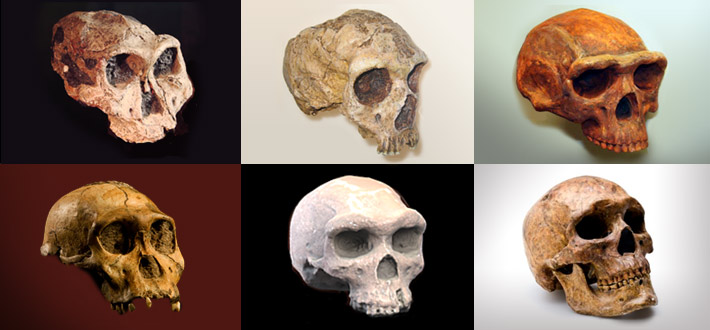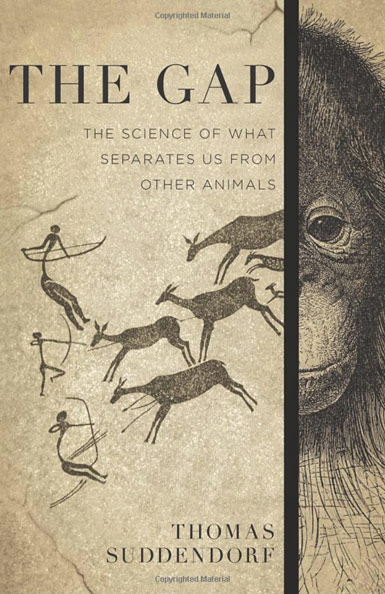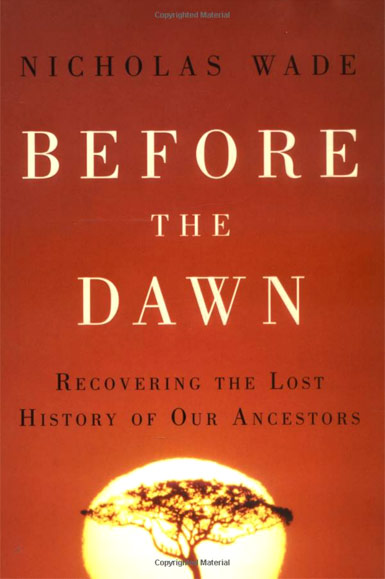
How Humans Evolved from Our Hominid Predecessors
The hominid history is constantly revised as new skeletal remains are found, but the evidence paleontologists have to work with remains sparse, consisting of few fossil bone fragments. Nevertheless, looking back as far as we can with the evidence currently available, we can better understand human evolution and our place in the world, where we differ from our hominid ancestors, and when and how these differences came about.
Chris Stringer, author of Lone Survivors: How We Came to Be the Only Humans on Earth, points out that there was no sudden evolutionary leap to fully-human beings but instead a gradual evolution of human abilities. He says “There is growing evidence that elements of modern behavior were there a hundred thousand years ago, and I think the gap or mismatch between the emergence of modern anatomy and modern behavior may well be much less significant than currently believed.” As he points out, brain organization and certain physiological features unrelated to size are more closely related to intelligence than brain size alone, and evidence shows that early forms of humans possessed some incipient cognitive abilities that were to become mature in H. sapiens.
In The Gap: The Science of What Separates Us from Other Animals, research psychologist Thomas Suddendorf concludes that our abilities in these cognitive areas far surpass those of animals because our minds evolved two overarching qualities: our drive to understand one another, and our ability to imagine different possible futures.
It is common, both in science and in everyday life, to conclude that there was always a huge difference between human beings and other primates. But this idea exists and persists only because all the other archaic humans died out thousands of years ago, leaving only us and our simian relatives, especially the great apes, chimps and bonobos.
The hominid history is constantly revised as new skeletal remains are found, but the evidence paleontologists have to work with remains sparse, consisting of a few fossil bone fragments. Opinions on species differentiation can differ, and, even though the technology for analyzing DNA sequences has progressed to the extent that it is now possible to clone a Neanderthal, the time frame of a given species and where the evidence fits within that time frame is still approximate and opinions differ, sometimes by as much as thousands of years. To fill in the many gaps, we will need more evidence.
The hominid history is constantly revised as new skeletal remains are found, but the evidence palaeontologists have to work with remains sparse, consisting of a few fossil bone fragments.
In 1858 Charles Darwin proposed that human beings evolved from apes via natural selection. It shocked the world. After all, for more than two thousand years, our view of ourselves had been influenced by the Ancient Greeks, who glorified the human form and human accomplishments in art, philosophy and religion. Even their gods were created in the image of humans – an idea that was perpetuated in Christianity.
A decade after Darwin’s declaration in The Origins of the Species, the first fossils of early modern humans were found at the 27,000- to 23,000-year-old Cro-Magnon rock shelter in southern France.
New findings, plus advances in the field of genetics and insights from archeologists, anthropologists, primatologists and other specialists now support Darwin’s profound insight. During the last six or seven million years at least 10, and possibly as many as 18, different hominid species lived on the earth. 6.5 million to 5 million years ago, some 100,000 apes, the ancestors of today’s apes and humans, lived in East Africa in a forest shrinking due to climate cooling.
There were two kinds of survivors of this climate change: one stayed with what was left of the forest and continued as before; the other was the beginning of the human line, it survived by occupying both the trees and the new spaces in between.
The oldest evidence so far of the Homo (human) split from Pan of the great apes, chimps and bonobos, occurred some 7–6 million years ago with Sahelanthropus, Orrorin tugenensis, and later, around 5.8 million years ago Ardipithecus kadabba who were all arboreal, but capable of upright walking.
About 4 million years ago, as climate fluctuations increased, our distant ancestor, the australopithecine, was able to survive in both wooded and grassland terrains because of this critical ability: to walk upright on two feet.
Starting with this early ancestor’s bipedalism, we can follow the evidence of our gradual evolution to modern man.

The Gap
The Science of What Separates Us from Other Animals
Thomas Suddendorf
A leading research psychologist concludes that our abilities surpass those of animals because our minds evolved two overarching qualities.

Before the Dawn
Recovering the Lost History of Our Ancestors
Nicholas Wade
New York Times science writer explores humanity’s origins as revealed by the latest genetic science.
In the series: Our Hominid Predecessors
Related articles:
- Genetics and Human Evolution
- Our Nearest Relatives: Bonobos and Chimpanzees
- Our Hominid Predecessors
- She Has Her Mother's Laugh
- Neanderthal Man – In Search of Lost Genomes
- The Evolution of Human Morality: The Age of Empathy and The Bonobo and the Atheist
- The Gap: The Science of What Separates Us from Other Animals
- Before the Dawn: New details of human evolution revealed
Further Reading »
External Stories and Videos

Brain Size of Human Ancestors Evolved Gradually over 3 Million Years
Science Daily
Study of hominin fossils shows that brain size increased gradually and consistently, driven by evolution within populations, introduction of larger-brained species and extinction of smaller-brained ones

Did Dramatic Climate Instability Effect Who We Became?
Smithsonian National Museum of Natural History
Explore how environmental changes influenced evolution, and how dramatic climate instability over the past 6 million years increased our ability to adapt.
